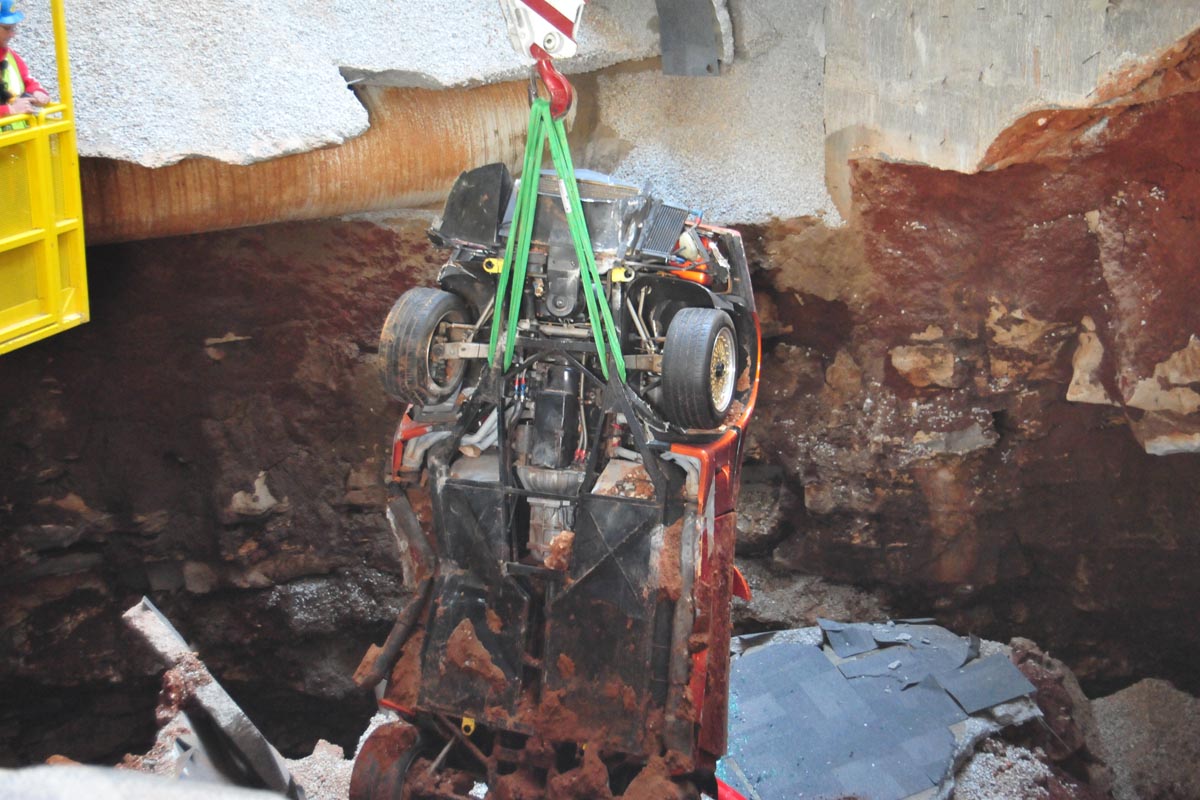The 1984 PPG Indy Pace Car Corvette was special from the very beginning- in several ways. Initally, it was created as a one-off concept car that would be designated as one of the official Pace Cars for the PPG Indy Car World Series of races. It was custom-built by PPG in cooperation with the Chevrolet Division of General Motors.
The PPG Pace Car was specially-built to run ahead of the pack at Indy Series races. It later found its way to the NCM and was one of the exhibits when the museum opened its doors in 1994.
Trying to keep ahead of an Indy car is not easy. That’s why a specially-prepared 450hp, 401 cubic-inch V-8 engine was built by Katech and mated to a BorgWarner T5 5-speed transmission featuring a modified overdrive. George Foller created the performance chassis that features coil-over shocks at each corner and Diversified Glass Products covered all of the custom work with an equally-custom body design that was then covered with PPG’s Deltron Acrylic Urethane Orange Glow Candy paint. Triad Service Inc. handled the final assembly and once the PPG Indy Pace Car was finished, it’s special side-exiting exhaust could be heard by millions, leading the pack at various Indy races.
Being a significant contribution to Corvette’s history, it’s easy to understand how the PPG Pace Car made its way to the National Corvette Museum. In fact, that’s where it has resided since way back in September of 1994, when the NCM first opened its doors. It was one of the very first exhibits featured at the NCM.
On February 12, 2014, the PPG Pace Car found itself partially covered by debris and other Corvettes.
It was part of the exhibit within the Skydome of the NCM the morning of February 12th, 2014 when the ground collapsed and eight Corvettes found themselves deep in the cold Kentucky ground. Extracting the specially-built Pace Car was made difficult by the huge slab of concrete that effectively chopped the car mid-point as it reached the bottom of the sinkhole, some thirty feet below where the car resided just seconds before. GM’s John Spencer explains, “It was stuck pretty well. It was upside down, and the back end of the car was in the dirt.” Dirt that would have to be removed along with the concrete slab, before the car could be brought back to the surface.
Mother Nature's toll on the body of the car was extensive. Due to so many custom pieces, it was deemed to keep the PPG Indy Pace Car in "As Found" condition.
Once again sitting above the horizon, an assessment was made as to the car’s condition. Due to the numbers of custom-built aspects of the car and the extent of the damage, it was determined that the evidence of the sinkhole would continue to be part of the car’s history and it would not be restored to its former glory. Doing so would necessitate that over half of the car be replaced and a plethora of new, one-off parts obtained.

The car now resides alongside the other Sinkhole Corvettes in a special exhibit highlighting their trip deep within the Kentucky landscape.
The car that once paced racers around the famed Indianapolis Speedway is now relegated to wearing the very clay that gave way underneath it. That once-shiny Orange Glow Candy paint now wears scratches and globs of dried dirt as a testament to its most recent date with fame. Those chunks of Kentucky mud don’t detract from how special this specially-built Corvette really is. Rather, like the chapters in a book, they simply roll the main character forward as the plot changes and carries them through the course of history. A history shared by a select few called the Sinkhole Corvettes.


























